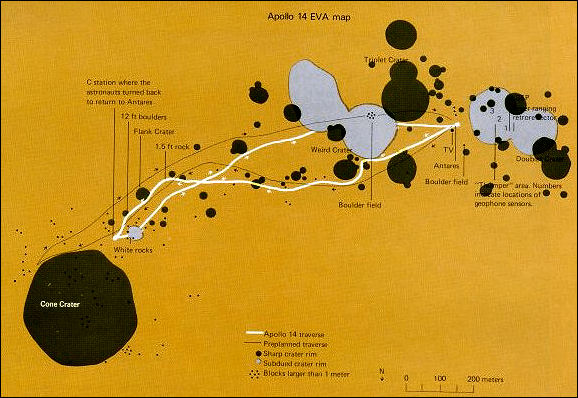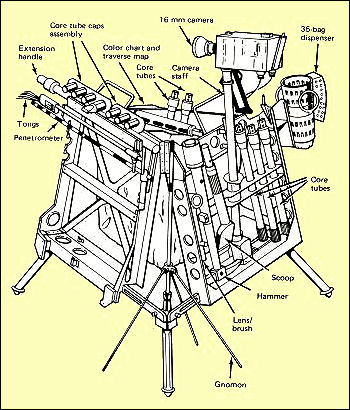
|
| The planned traverse route for the second EVA is shown by a fine black line an this map of the Apollo 14 site. The heavier white line is the traverse actually covered. The craters and boulders encountered are plotted, as are the locations of the emplaced experiments. Such maps are essential for an understanding of the sample sources and the experiment data. |



